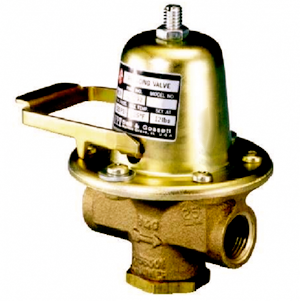MBaker1921
New Member
Hello: New to forum.
I have an older Weil-McClain hot water boiler, single zone, with old style radiators. I noticed some of the radiators were not getting warm so checked water pressure guage. Only about 5lbs of pressure. I added water (Bell and Gossett water reducing valve) and the PRV popped off at only 12 lbs or so. System has a old-style steel expansion tank hung from ceiling. I drained it after turning off the water and power. The PRV weeps so it will need to be replaced for sure. Also, several of the radiators need to be purged of air every few days. System bangs and clangs when boiler fires up.
My question: Since the system is only operating at 5 lbs, why isn't the water reducing valve adding water to the system as it is set to 12 lbs? Is this also in need of being replaced? The expansion tank is not full of water, but could that be part of the problem? Would the best course to keep 10-12 lbs be to replace the PRV and go from there?
Thanks for any help!
I have an older Weil-McClain hot water boiler, single zone, with old style radiators. I noticed some of the radiators were not getting warm so checked water pressure guage. Only about 5lbs of pressure. I added water (Bell and Gossett water reducing valve) and the PRV popped off at only 12 lbs or so. System has a old-style steel expansion tank hung from ceiling. I drained it after turning off the water and power. The PRV weeps so it will need to be replaced for sure. Also, several of the radiators need to be purged of air every few days. System bangs and clangs when boiler fires up.
My question: Since the system is only operating at 5 lbs, why isn't the water reducing valve adding water to the system as it is set to 12 lbs? Is this also in need of being replaced? The expansion tank is not full of water, but could that be part of the problem? Would the best course to keep 10-12 lbs be to replace the PRV and go from there?
Thanks for any help!

